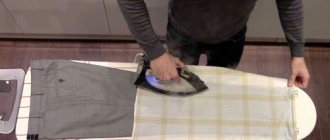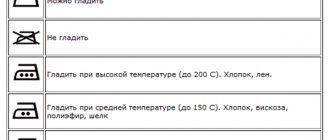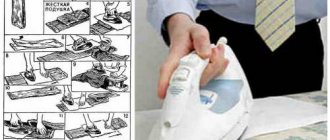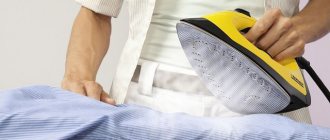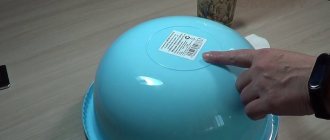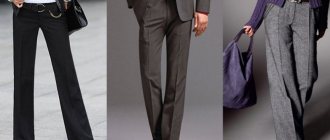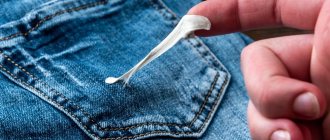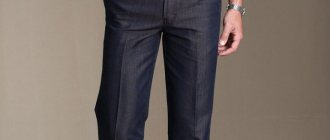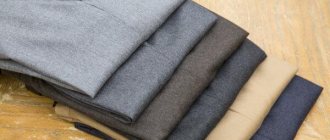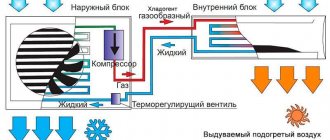Sometimes it becomes necessary to remove creases on trousers; this applies to classic trousers, in which they are an invariable element that emphasizes a strict style. To diversify your wardrobe or give your usual office clothes a new image, you don’t have to alter them. By smoothing out the creases on your trousers so that not a trace remains of them, you can get rid of the business style and get a comfortable item for everyday use.
Now the trousers will have no creases
A classic for all times: how often do people buy it so as not to change their wardrobe every year, barely keeping up with fashion.
You can wear classic things for many years and not look back to see if fashionistas and fashionistas are laughing after you. It is all the more profitable to buy a classic version of suits and trousers since most of you work in the office sector, and it does not include clothes in flashy styles. Most enterprises have a dress code. But how sad it sometimes becomes when you open your wardrobe - and everything is in order, there are straight lines on the trousers... Classics are classics, and sometimes you just want to change something in your image. In order not to change your wardrobe and make your style more free, you just need to smooth out the creases on a pair of trousers. Then they will look closer to the English casual style: more comfortable and spontaneous.
You buy classic trousers with ready-made, carefully ironed creases. Manufacturers have made sure that you do not have to worry about determining the location of the fold. But, as you noticed, after washing the arrows had to be updated, following the old traces. If you run the process of pointing the arrows in the opposite direction, you can get straight trouser legs. Walking around for several months until the arrows themselves deign to disappear is tiring. And the remaining folds look sloppy. Use the iron.
If you pointed the arrows with a hot iron, then you will use the same iron to smooth them out. Just fold your trousers differently on the ironing board. Turn the pant legs inside out and align them front and back. Shooting on the side seams never happens. And the middle should remain straight. Place damp, thick gauze on the pant leg and straighten it out. Walk over the fabric with the hot sole of the iron, in the place of the arrow - with special diligence. It is not a fact that the fold will straighten out immediately. The procedure can be repeated 2 or 3 times until the trouser leg is leveled. Do the same with the back half and move on to the second leg.
The result was satisfactory - excellent, the remains of the arrows are vaguely visible - make straightening more difficult: lay out the pant legs with the seams on the sides, turn on the iron to steam mode. Draw a couple of millimeters above the fabric and immediately press the arrows with something flat and heavy. A book (just not with a varnished cover: it will melt), a tailor’s ruler. Hold in this position for half a minute, then move on. And so on to the bottom of the trouser leg. The steamed fibers do not have time to take on a fixed arrow shape and straighten out.
Step-by-step instructions for ironing after washing with photos for beginners
Before ironing, trousers must be inspected, the contents of the pockets checked, and all foreign objects removed from them. If an item needs cleaning and repairs, they are carried out before ironing.
First, the trousers are turned inside out. If there is a lining, start working with it.
Men's, women's and children's classic trousers with arrows are ironed using the same method.
How to smooth the top of men's and women's pants?
Ironing begins with inspecting the product and determining the condition of the item.
The upper part of the trousers has a lot of details, seams and stitching. All this creates additional difficulties during processing. The burlap of the pockets is smoothed out first . In this case, the temperature setting on the iron must be adjusted taking into account the burlap fabric. Iron the pockets, first turning the pants inside out.
The direction of smoothing is from top to bottom . The trousers are straightened and put on the ironing board from the narrow edge. Pay attention to the pocket area and belt. It must be ironed on both sides through gauze. After this, iron the fly area and seams.
If the trousers cannot be placed on the ironing board, you can use additional devices that will allow you to separate the front and back of the trousers during the ironing process.
You can use a small shield for this . Its size can be the same in length and width as a landscape sheet or a little larger. You can make such a shield using a dense base, for example, plywood. The top of such a shield is covered with thick fabric. You can also use a large format book wrapped in thick material.
When ironing trousers, it is advisable to avoid ironing the front and back of the trousers at the same time. This is a complex area with many details and seams that can be unsightly imprinted on the front side under the influence of an iron.
Pants
The trouser legs themselves are ironed along the entire length. This should only be done through a specially designed mesh fabric, gauze or cotton. The material must be moistened.
You can do this in one of the following ways:
- using the steam function in the iron;
- spraying water from a spray bottle.
The trouser legs are ironed first on one side and then on the other. After this, they move on to ironing the inside of first one and then the second leg. At the same time, the second leg folds back so as not to interfere.
When ironing from the inside is completed, the trousers are turned right side out . And, using additional fabric, iron along the trouser legs. The arrows are not yet smoothed at this stage.
Smoothing out the arrows
The transition to ironing the arrows is a crucial moment that does not tolerate fuss. Pants must be turned right side out.
The trouser legs are carefully straightened, and the side and inner seams are connected on each trouser leg. In this case, two folds are formed. These will be the future shooters.
In classic models, two darts are stitched at the back and front. The folds should be completely straight. And they should go from the darts to the very bottom.
When folding trouser legs, focus on the following points:
- Matching seams (internal and side).
- The arrows should be a continuation of the darts.
To prevent the fabric from moving when ironing, the trouser leg can be secured with invisible pins or paper clips. The standard method of ironing out wrinkles begins with fixing the correct position of the trouser legs. After this, ironing is carried out, following the recommendations:
ironing from the front side can only be done through additional fabric - gauze;- It’s better to start from the knee area - approximately from the middle of the trouser legs;
- when ironing, it is desirable that the fabric be slightly stretched - this will make the arrows smoother and clearer;
- It is better to move the iron from zone to zone without slipping, moving it to a new place each time;
- if the fabric allows the use of steam, this must be done;
- they move on to the second leg only after the first arrow is completely ironed and the result is satisfactory;
- for standard classic models, the arrow is not smoothed down to the waist, leaving up to 10 cm.
If the trouser model has not darts in front, but a pair of pintucks, then ironing the trousers involves first smoothing them, and then ironing out the creases.
How to iron trousers with arrows, step-by-step photos for beginners:
How to remove creases on trousers
If you decide to change your image a little, or change the style of some clothes that are familiar and boring to you, then, without resorting to altering the clothes, you can give it a completely different sound.
The question that arises is how to effectively remove creases on trousers, freeing them from the prim, classic look. How to remove creases on trousers so that not a trace remains of them?
If you're determined to change your clothing style, start by clearing out your wardrobe of classic, outdated pieces. If you are tired of your trousers because classic arrows annoy you, you don’t have to change your trousers, try to remove the arrow. To do this you will need an iron, ironing board, patience and caution.
Traditional trousers include creases, most styles. This design solution contributes to the visual slenderness of the legs. In brand stores, trousers are ironed in advance and creases are formed so that the buyer does not have to worry about finding the middle of the trousers on his own. But, if necessary, smoothing out creases on trousers is even easier than creating them.
Where to start removing creases on trousers?
To begin, inspect the trousers, find the manufacturer's label and read whether the manufacturer provides any specific conditions for ironing trousers and for using an iron. After that, take out the iron, lay out the ironing board and prepare a place for ironing so that nothing interferes with you from laying out the trouser legs.
Select the ironing temperature based on the recommendations on the pants label or fabric type. If you don’t know what temperature setting to choose to remove the crease on your trousers, start with a low temperature and gradually increase it, trying to iron the crease on the hem of the trouser leg to understand whether this temperature is enough or not. You can always increase the temperature, but if you choose too high a temperature setting, you will have to first remove shiny stains from ironing, and then deal with the arrows.
How to shorten pants without sewing?
Steps
- If your pants are not hemmed, you can start working right away. ...
- Turn the pants right side out. ...
- Mark the desired length on the pants with chalk. ...
- Leave 3cm for the hem and cut off the excess. ...
- Take the adhesive web tape and sew it along the inside of the legs. ...
- Lay your pants out on the table.
Interesting materials:
Which polyhedral angle is called convex? Which polygon is called convex? Explain what angles are called the angles of a convex polygon briefly? Which people came up with the name Valdai and Seliger? What object is called the Academy of Sciences? What segment is called the bisector of a triangle? What segment is called the median of a triangle? What segment is called perpendicular? Which segment is called the radius of the circle? What segment is called the midline of a trapezoid? What is the midline of a trapezoid? Which segment is called the midline?
Instructions for smoothing creases on trousers
Sometimes it becomes necessary to remove creases on trousers; this applies to classic trousers, in which they are an invariable element that emphasizes a strict style. To diversify your wardrobe or give your usual office clothes a new image, you don’t have to alter them. By smoothing out the creases on your trousers so that not a trace remains of them, you can get rid of the business style and get a comfortable item for everyday use.
How to smooth out arrows and correct mistakes?
It is quite difficult for an inexperienced person to get even, neat arrows the first time. However, “false arrows” are not a reason to despair. Errors can be easily corrected using available tools.
Simple ironing
To remove uneven arrows, just smooth them from the wrong side. However, this will require a lot of effort.
Vinegar
Mode of application:
- 2 tbsp. l. Mix 9% vinegar solution with 1 liter of water, mix thoroughly.
- Soak gauze in this liquid.
- Steam the legs one by one through gauze from the wrong side.
Advice! This method is also suitable for removing shine from trousers.
Washing with laundry soap
To get rid of the unpleasant shine that appears after ironing, just wash your trousers with laundry soap.
What you need to know
To remove the arrows, you will need an iron and ironing board, as well as a little time and patience. First, you need to find a label on the fabric with information from the manufacturer about the intended washing and ironing conditions. The label has the following symbols:
- The three-point iron allows ironing at temperatures starting from 200°C.
- Two points allow heating to no more than 150°C.
- One point recommends not to exceed 110°C.
- The image of crossed out steam from the iron allows you to iron only without steam.
If there is no label, start with minimal heat, gradually starting to increase the temperature. You cannot iron a product at a high temperature; the fabric can be damaged; at best, stains will appear from areas ironed at a high temperature.
If it doesn't smooth out
A problem may arise with smoothing out old arrows that remain even after proper processing. If the fabric allows ironing with steam, the problem can be solved easily and quickly:
- The trousers must be thoroughly moistened with water and the trouser leg laid out on an ironing board.
- Hot steam is released over the desired place, after which the iron rises, and a book or other suitable object must be placed in its place.
- Pressing a kind of press with your hand, hold for 20-30 seconds.
The method is effective because the press, after treatment with hot steam, does not allow the fabric to take the shape of an arrow.
Knowing how to hide creases in trousers, you can continue to use your favorite item, which will delight you with its new style.
Might be interesting
As practice shows, not everyone knows how to properly iron trousers with creases. Now things like this...
Over time, the coat changes color, it becomes pale, and spots appear that are difficult to get rid of. If…
To maximize the life of one of the most durable and practical wardrobe items, you need to be able to correctly...
Step-by-step instructions for ironing trousers with arrows
If there is no label on the belt, select the ironing mode and additional heat treatment rules yourself:
| Wool | Medium or low temperature with steaming using an iron. It is strictly forbidden to move the iron over the surface to avoid deformation. |
| Cotton | Use high temperature and steam mode, pre-moisten the material. |
| Linen | Maximum iron temperature, iron from inside out or through a dry iron. |
| Synthetics (polyacrylic, polyamide, viscose) | Medium or low temperature steam iron. |
| Blended fabrics | Use a mode suitable for the most capricious of all incoming fibers. |
- How to iron bed linen correctly, and is it necessary at all?
- How to iron clothes correctly: useful life hacks
- How to properly iron a long-sleeved shirt: instructions
Ironing men's trousers with creases is not difficult if you follow a certain sequence. The front side of the trouser fabric is ironed only through an iron, otherwise an unwanted gloss and scorch will appear. If the fabric is to be steamed, the iron is first wetted, thoroughly wrung out and the process is repeated as it dries.
- Turn your pants inside out.
- Smooth out the lining and pockets.
- Carefully go over the small details with the iron: belt, codpiece, back seams. If you wear dress pants every day, get a thick pad the size of your palm and pad it to avoid creases in adjacent areas.
- Place each pant leg individually on the ironing surface and iron on both sides. Work your way along the legs, from the waistband to the bottom, without pressing the seams.
- Turn the trousers right side out and lay them out so that the side seam and crotch seam are exactly the same length. It is more convenient to take the lower sections of both legs, align the beginning of the four seams by weight, and then transfer them to the ironing board and further smooth them out with your hands. If the fabric slips and you don’t have enough ironing experience, fix the position of the seams with pins or paper clips.
- Press the seams carefully. To avoid moving the seams, avoid forward movements, hold the iron in place for a few seconds, and then move it further. You can get the hang of ironing both pant legs at once. It is advisable to fold the upper pant leg towards the waistband and iron them one by one.
- To ensure that the back and front shoots are even, you need to align the side and step seams along the length. Then the folds of the trouser legs will be in the middle of the panel, where the arrows should go. It is recommended to start ironing from the knee area, moving the iron from place to place with strong pressure.
- Do not wear or store your pants until they are completely cool.
Ironing trousers with creases may seem like a painstaking job to an inexperienced housewife, which will take a lot of time and effort. But each time the ironing stages become more familiar and easier, and the work time is reduced.
Temperature selection
Before picking up an iron, you need to inquire about the ironing conditions of the existing product. Information about this is easy to find on the manufacturer's label attached to the inside of the trousers. Usually the designation takes the form of an iron with certain symbols indicating in what mode this type of fabric can be ironed. The options are as follows:
- Iron and three points. In this case, you can set the heating temperature of the device to 200 degrees.
- Iron and two points. Such symbols on the label indicate the permissible temperature - up to 150 degrees.
- Single point iron. The recommended ironing temperature is low, up to 110 degrees.
- An iron with steam output crossed out means that the item can only be ironed without using steam.
If the tag is lost and it remains unclear which temperature mode to choose, you should start with the minimum heating intensity of the iron, and then gradually increase the temperature. It is necessary to ensure that the arrow begins to smooth out without harm to the fabric.
Ironing process
There are some rules on how to smooth out creases on trousers most effectively. It is most convenient to use an ironing board when working. No objects should interfere with the ability to freely unfold the trousers - the arrows should be placed in the middle of the trouser leg.
It is safest to iron the product from the inside out. For better and faster smoothing, the fabric in the places of the arrows must be wetted. You need to apply the iron until the moisture completely disappears and the arrow is removed. The device should be kept in one place longer, but so that the fabric does not overheat.
When using an iron on the outer surface of the product, be sure to place damp gauze between the device and the fabric: this will help avoid the formation of shiny marks on the trousers. When exposed to temperature, the gauze will dry out quite quickly, so it must be moistened frequently.
Why are there stripes on tights?
Authors of fashion magazines are often biased that most tights
with designs and patterns designed solely to fill out the legs.
Surprisingly, the vertical stripe
: it supposedly gathers on the ankles.
Interesting materials:
How can I see what video card is used in the game? How can I see which games are linked to Facebook? How can I see which games are linked to Facebook? How can I see when a game was purchased on Steam? How can I view my games on steam? How to watch the game online on Steam? How to see hidden games on Steam 2022? How to see hidden games on Steam 2022? How to install the game on another video card? How to add a game to Kaspersky antivirus exclusions?
If the arrows smooth out poorly
Many people have a question about how to smooth out old creases on trousers, if even with careful processing they leave noticeable marks. However, this problem can also arise with recently purchased trousers with stable industrial arrows. In this case, the “quick press” method can help. It is acceptable for fabrics that can be ironed using steam.
Having laid out the well-wetted trousers, you need to release steam from the iron. Then the device is raised, and a wooden block or book is immediately applied to the treated area. Additionally, you need to press the object with your palm and hold it in this position for at least 20 seconds. Afterwards you are allowed to move on to the next section. The effectiveness of the method is explained by the fact that timely pressing does not allow the fibers, after exposure to steam, to rise and take the previously fixed shape.
Having dealt with the problem of removing the arrows, you can continue to enjoy your favorite item, which after all the efforts will acquire a new elegant look.
How to secure the arrows so that they last for a long time?
When ironing classic trousers, everyone wants the creases to remain sharp for a long time. Additional processing will help to do this. It can be organized using vinegar, starch or soap.
Soap for the underside
Having turned the trousers inside out, run a dry soap along the fold line along each trouser leg . This method will help secure the fold. After this, the trousers are turned right side out and thoroughly ironed.
Do not use wet soap. This may cause a stain to appear on the front of the product.
Vinegar and starch
A simple technique using vinegar will help strengthen the fold and make it more durable.
To do this, prepare the following composition by mixing the components:
- water (1 l.);
- vinegar (1 tbsp);
- starch (1 tsp).
Work order:
- The trousers are turned inside out.
- Wet the trouser legs with a slightly prepared solution.
- Turn it right side out.
- Mark the folds.
- Smooth out the arrows in the usual way.
This composition should not be used to treat fabric on the front side, as this will lead to the formation of stains.
Ammonia or vinegar
One of the simple ways to fix the arrows is ammonia or vinegar. These substances are used diluted in water.
How to use:
- Prepare a solution at the rate of 1 tsp. prepared preparation per liter of water.
- The fabric through which the arrows will be ironed is moistened in this solution.
- The fabric is wrung out.
- Ironing is carried out in the usual way.
For each arrow, the supporting fabric is moistened separately, since the dried auxiliary fabric loses its function of fixing the arrows.
Where to begin?
Before you start ironing, study the composition of the fabric, this will help you avoid mistakes and ruin your trousers . On the label, the manufacturer indicates the content of a certain fabric in the product. It looks like this: 80% cotton, 20% polyester. That is, this model contains both synthetic and natural fibers, while there are more of the latter threads in the trousers.
What you need to know about fabric?
Depending on the composition of the fabric, you need to set the temperature and a certain ironing mode. For example, it is recommended to process synthetics only with a warm iron, jersey can only be ironed through damp gauze, and wool must be ironed from the reverse side at a temperature not exceeding 165 degrees. Lining fabric requires ironing from the inside out without using steam or dampening.
IMPORTANT! Always start ironing your item at a low temperature on a small area near the edge, so you will understand which ironing method is suitable for this item.
Required Tools
In order to remove creases on trousers, you need to have an iron and an ironing board on hand (the latter can be replaced with a flat, hard surface). You may also need damp gauze or a thin cloth. If the iron does not have a built-in water sprinkler, clean water and a spray bottle will be an indispensable assistant. Most modern irons are equipped with a steamer, but if your assistant does not have such a function, you will need a pan of boiling water.
What ironing modes are there?
Depending on the type of fabric, there are several ironing modes:
- dry;
- wet;
- using steam.
Dry mode is suitable for trousers made of cotton or linen. Dry mode is not suitable for wool products. Damp or wet ironing is suitable for almost all types of fabric. The process occurs by spraying water on the item itself or using damp gauze. Some fabrics need to be steamed. There is a small nuance here. For example, wool trousers must be steamed from the reverse side, otherwise the fabric will begin to shine and shine .
Preparing for ironing
Ironing trousers requires a responsible approach and compliance with phased work.
In order to start ironing, you need to prepare
- workplace, preferably an ironing board;
- a spray bottle containing clean water;
- a mesh (gauze or piece of fabric) through which the trousers will be ironed.
The temperature of exposure depends on the composition of the fabric . It is displayed in accordance with the manufacturer's recommendations, which are indicated on the label. It is usually attached to the side seam or waistband of the trousers on the inside.
Stages of smoothing out arrows
You should start by cleaning or washing your trousers. The item must be clean from dirt, lint, and dust. Pockets must be empty. Once you are sure that the trousers can be ironed, proceed to the stage of smoothing out the creases.
- Carefully lay the product on an ironing board or other flat and hard surface (table, cabinet, etc.). The pants are ironed one at a time. The arrow should be exactly in the middle of the trouser leg.
- Wet the cloth or gauze with water and place it on the iron, set the iron to the acceptable temperature setting and start ironing.
- Iron the arrow until the wet gauze dries and the arrow disappears. Be careful not to overheat the fabric. It is better to wet the gauze again and repeat the process. If your trousers can be ironed with steam, use this mode, this will make the job easier and the creases will disappear faster.
There is no particular difference in which direction to iron the trousers, but moving from the edge of the trouser leg to the top, that is, to the waistband, is more convenient. There is no need to iron the entire arrow at once; work with small sections of 10–15 cm, gradually moving the wet gauze.
IMPORTANT! If you are afraid of ruining your trousers, iron the product from the inside out.
How to iron trousers: the necessary technique and algorithm of work
In order to properly iron your trousers, you will need a good iron and a properly organized ironing area. Without all this, you won’t be able to get rid of folds and bruises, or make beautiful, even arrows. Ideally, the iron is equipped with a temperature switch and a steam supply system. If you have an old Soviet iron, it’s also not a problem. In this case, always use damp gauze, folded several times. If you are the happy owner of a vertical steamer, then with its help you will be able to smooth out even the most difficult bruises right on the spot.
It is better to iron trousers on an ironing board, but it can be quite successfully replaced with a kitchen table covered with a thick blanket. Auxiliary items will also come in handy:
- ironer,
- tailor's pins or stationery clips (binders),
- spray bottle with water,
- terry towel,
- sheets of cardboard or thick paper.
Trousers, like other types of clothing, are recommended to be ironed from the inside out or through an iron. This will protect the fabric from the formation of lasses, shine and scorching. Pins and clips are useful when ironing creases, as they are used to secure the instep and side seams. A spray bottle is used to additionally moisten the fabric so that folds can be ironed out better, and a terry towel makes ironing some hard-to-reach places easier. A sheet of cardboard is placed under the burlap pockets or seams so that they do not print on the outside of the trousers after ironing.
Temperature conditions for ironing trousers made of different fabrics
Before you start ironing, you need to read the information on the label. The fabric composition and care recommendations should be indicated there. Depending on the material, you need to choose the optimal temperature regime.
Knowing the composition of the fabric, it will be easier to select the correct temperature setting on the thermostat:
- wool, mixed fabric - wool mode, number 2 or two dots,
- polyester - silk mode, nylon, number 1 or one dot,
- cotton, linen - mode cotton, linen, number 3 or three dots,
- cotton + synthetic - iron like wool, but with pressure.
The wool is not ironed with pressure, but steamed, barely touching the fabric with the sole of the iron. Cotton and linen are ironed with pressure using a damp iron. Synthetic fabrics are ironed at a minimum temperature only through gauze. If it was not possible to determine the composition of the fabric, then ironing begins from the inside out at the hem of the trousers.
The type of fabric is also taken into account. If there is lint, the product should be ironed, if possible, only on the reverse side. If this is not enough, then the iron is moved in the direction of the pile, that is, from top to bottom, barely touching the surface of the fabric.
Table: recommended ironing parameters for different types of fabrics
| Material | Steam quantity | Steam quality | Temperature, °C | Features of the iron |
| Cotton | Average | Wet | 180–220 | Need pressure |
| Linen | A lot of | Wet | 215–230 | Need pressure |
| Cotton + linen | A lot of | Wet | 180–220 | Need pressure |
| Wool | A lot of | Wet | 160–170 | With steaming |
| Polyester | Very little | Very dry | 160–200 | Without water |
| Cotton + synthetic | Average | Dry | 160–170 | Ironer |
| Wool + synthetic | Average | Little moisture | 160–180 | Ironer |
| Cotton corduroy | Average | Less humid | 180–190 | Hem movement |
Ironing algorithm for classic trousers with arrows
Trousers are ironed in the following sequence:
- Turn it inside out.
- First they iron the upper part: the burlap of the pockets, underneath them.
- To ensure that the trousers fit well on the figure and do not wrinkle at the seams, press the side and crotch seams. The side seam is ironed from the waist down, the step seam is ironed from the bottom of the trousers upward.
- The trousers are turned on the face.
- Unfasten the zipper, open its different sides and iron the middle seam. Stroked in the buttocks area.
- Iron the belt first on the front half, and then on the back.
- If there are folds that turn into arrows, then we also pay attention to them.
- Iron side and back pockets.
- Place a folded towel inside the trousers or put it on the edge of the board.
- Iron the codpiece and the front of the trousers.
- Fold the trousers in half and begin to form the creases.
- After finishing work, the trousers are allowed to cool for 15 minutes, or preferably several hours.
